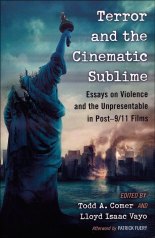Originally published in the Spring 2013 SWALL Bulletin.
In the last issue, I presented a list of the major reference books on law and film/television. In addition to these resources, a great deal of law and film scholarship is being done regularly in a variety of media. This annotated bibliography presents new reference works, along with scholarly works in specific areas of law and politics, that may be of interest to faculty using film in their scholarship or teaching.
::: FILMS :::
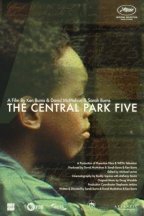 THE CENTRAL PARK FIVE (Sundance Selects 2012).
THE CENTRAL PARK FIVE (Sundance Selects 2012).
Co-directed by Sarah Burns (based on her book), her husband David McMahon, and her father, acclaimed documentary filmmaker Ken Burns, this film looks at the Central Park Jogger case of 1989, in which five black and Latino teenagers were convicted of attacking and raping a white female jogger. Focusing on themes of race and injustice, The Central Park Five examines how the intense media frenzy surrounding the case helped lead to the defendants serving years in prison for a crime they did not commit, and recounts the events leading to the convictions being vacated. (DVD Release Date: April 2013)
WEST OF MEMPHIS (Sony Pictures Classics 2012).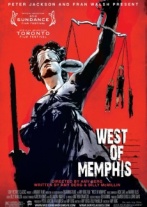
Following in the footsteps of the 1996 documentary Paradise Lost: The Child Murders at Robin Hood Hills and its two sequels, this film revisits the case of three West Memphis teenagers (dubbed by supporters as the West Memphis 3) who were convicted in 1993 for the murders of three 8-year old boys, and spent over 18 years in prison until their release in 2011. Directed by Amy Berg, and co-produced by one of the defendants, West of Memphis explores the teens’ incarceration and ongoing efforts to have their convictions officially overturned. The film lays out the case for their innocence and details how high-profile figures, including Johnny Depp, Eddie Vedder, and Natalie Maines, helped raise funds and awareness for the trio’s cause. (DVD Release Date: Not Announced)
::: BOOKS :::
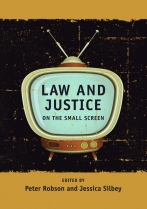 LAW AND JUSTICE ON THE SMALL SCREEN (Peter Robson & Jessica Silbey, eds., 2012).
LAW AND JUSTICE ON THE SMALL SCREEN (Peter Robson & Jessica Silbey, eds., 2012).
This collection of essays looks at issues regarding the analysis of law and popular culture on television. It focuses on genre studies, including a subsection on reality TV, and offers content analysis of individual television shows with attention to jurisprudential questions of the law’s efficacy and the promise of justice. It includes discussions of television shows from the US, Canada, France, the UK, Germany, and Spain. It is appropriate for a wide range of undergraduate and graduate areas, including media studies, law and culture, socio-legal studies, comparative law, jurisprudence, the law of lawyering, alternative dispute resolution, and criminal law.
PAUL A. CANTOR, THE INVISIBLE HAND IN POPULAR CULTURE: LIBERTY VS. AUTHORITY IN AMERICAN FILM AND TV (2012).
This book explores how television shows such as Star Trek, The X-Files, South Park, and Deadwood (and films such as The Aviator and Mars Attacks!) have portrayed top-down and bottom-up models of order. Author Paul Cantor draws on the works of John Locke, Adam Smith, and Alexis de Tocqueville to examine the classical liberal vision of America, with a particular emphasis on the virtues of spontaneous order. The book concludes with a discussion of the impact of 9/11 on film and television, and the new anxieties emerging in contemporary alien-invasion narratives, including fears of a global technocracy. Cantor is the author of GILLIGAN UNBOUND: POP CULTURE IN THE AGE OF GLOBALIZATION.
PETER L. BEILENSON AND PATRICK A. MCGUIRE, TAPPING INTO THE WIRE: THE REAL URBAN CRISIS (2012).
This book uses the HBO television series The Wire to explore the connections between inner-city poverty and drug-related violence, and to examine urban policy and public health issues affecting American cities. Detailed summaries of scenes and characters help readers who have not seen the TV series to understand the characters’ challenges in the broader context of public policy.
TERROR AND THE CINEMATIC SUBLIME: ESSAYS ON VIOLENCE AND THE UNPRESENTABLE IN POST-9/11 FILMS (Todd A. Comer & Lloyd Isaac Vayo, eds., 2013).
This collection of essays considers film in the aftermath of September 11, 2001. Essayists discuss independent films, post-cinematic media, and Hollywood movies (including theatrically-released films by Steven Spielberg, Darren Aronofsky, Quentin Tarantino, and Spike Lee). The book focuses on the concept of the sublime—that which can be thought but not represented—and analyzes ideas of trauma, horror, catastrophe, apocalypse, the military-industrial complex, and the limits of freedom as a way of gauging the pulse of our cultural moment.
JENNIFER LYNDE BARKER, ROUTLEDGE ADVANCES IN FILM STUDIES #19: THE AESTHETICS OF ANTIFASCIST FILM: RADICAL PROJECTION (2012).
This book uses a series of detailed film case histories—including The Great Dictator, Hiroshima Mon Amour, and The Lives of Others—to explore the genesis and recurrence of antifascist aesthetics during the WWII, Cold War, and Post-Soviet periods. Drawing on insights from film and cultural studies, aesthetic and ethical philosophy, and socio-political theory, Barker shows how filmmakers have juxtaposed documentary and modernist techniques of surrealism and expressionism to manifest non-totalitarian works that projected a radical beauty of distortion, heterogeneity, fragmentation, and loss.
BARRY FORSHAW, BRITISH CRIME FILM: SUBVERTING THE SOCIAL ORDER (2012).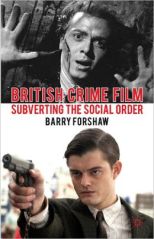
This comprehensive social history of British crime film details how crime films have portrayed changing attitudes towards class, politics, sex, delinquency, violence, and censorship. Focusing on these key issues, Forshaw examines the strategies used by filmmakers to address radical notions of society’s decline. The book identifies and contextualizes both important and neglected post-war crime cinema, including The Ladykillers, Get Carter, The Long Good Friday, Layer Cake, and Lock, Stock and Two Smoking Barrels.
::: SCHOLARLY ARTICLES :::
Laura Ray, From the Bench to the Screen: The Woman Judge in Film, 60 CLEVELAND STATE LAW REVIEW 681 (2012). Available at SSRN: http://ssrn.com/abstract=2209190
This article addresses the relationship between social reality and its representation on screen by exposing a lingering resistance to the idea of women exercising judicial power. It first examines the sparse history of women judges as central characters in films of the 1930s, focusing on the tension between judicial authority and domestic happiness. Next, it turns to Hollywood romantic comedies of the 1940s, which resolved that tension through the courtship of women judges by charming and tolerant suitors. The article contrasts those films with recent, darker films which present aspiring and active women judges struggling unsuccessfully to reconcile their professional and personal identities.
Erin Flynn, Aesthetic Justice in High Plains Drifter, 4 PROCEEDINGS OF THE EUROPEAN SOCIETY FOR AESTHETICS 215 (2012).
This paper presents the idea that Clint Eastwood’s High Plains Drifter is a depiction of the evolution of an aesthetic representation of justice. Flynn argues that such representation depicts justice as determined by a moral or natural law that prefigures and grounds the authority and legitimacy of the civil order. The author sees the representation of justice in High Plains Drifter, in which the law is aesthetically represented as divine law, as being the product of certain conceptual features common to many Westerns.
Sue Matheson, John Ford on the Cold War: Stetsons and Cast Shadows in The Man Who Shot
Liberty Valance (1962), 45 JOURNAL OF POPULAR CULTURE 357 (2012).
This article presents The Man Who Shot Liberty Valance as a valuable Cold War artifact that rests upon traditional paradoxes of Western films that are created by the tension between the opposition of East and West, civilization and savagery, order and disorder, law and outlaw, and legend and history. Matheson explores the notion that the film displays director John Ford’s concern with “the disparity between historical fact and tradition.”
Thomas Heise, The Crimes of Punishment: The Tortured Logic of Mickey Spillane’s Kiss Me,
Deadly. 45 JOURNAL OF POPULAR CULTURE 56 (2012).
This article examines how Kiss Me, Deadly records the postwar social anxieties of the American public—including rising urban crime—and how the film redirected such anxieties onto an immigrant criminal underworld that was both part of the nation and alien to it. Heise argues that the film is both an assault on law and order and an attempt at reversion to an earlier level of primal and sadistic violence that preceded the rise of modern bureaucracy.
Jeremy Withers, The Social Construction of Nature and Oliver Stone’s Natural Born Killers, 45
JOURNAL OF POPULAR CULTURE 649 (2012).
This article looks at one of the themes of Natural Born Killers that has not been previously fully analyzed by film scholars: the ideological role of nature—in particular, of animals—in cinematic explorations of human violence. Author Jeremy Withers finds Stone’s film to be a serious interrogation of humanity’s complicated relationship with the natural world and its animal inhabitants. Withers sees the film as a critical text that tackles contentious and important issues in contemporary animal studies and environmental ethics.
Kent Anderson, Reflections on I Just Didn’t Do It, the Lay Judge System, and Legal Education in
and Out of Japan, 7 ASIAN JOURNAL OF COMPARATIVE LAW 1 (2012).
This article looks at the 2007 film I Just Didn’t Do It, from the Academy Award winning director of Shall We Dance. Anderson uses the film, itself a critique of the Japanese criminal justice system in the context of wrongful convictions, as a means of reflecting on criminal justice reforms in Japan. He goes on to ask whether the use of film as a legal text assists or distracts from pedagogical objectives in teaching comparative law.
Guy Osborn, Borders and Boundaries: Locating the Law in Film, 28 JOURNAL OF LAW AND
SOCIETY 164 (2001).
This essay examines the emergence of law and film in the curricula of British law schools. Osborn outlines the development of legal education in England and Wales, along with the relationship between legal education and training. Osborn notes the broadening out of the syllabus to encompass politicized courses taught within their socio-economic context, particularly family law and labor law. The article also discusses the precise nature of law and film studies and its boundaries.
::: WEB RESOURCES :::
Matthew Belinkie, The Law and Order Database: All 20 Seasons, OVERTHINKING IT (Nov. 13,
2012). http://www.overthinkingit.com/2012/11/13/the-law-and-order-database-all-20-seasons
This website features a crowdsourced list of legal outcomes for all 456 episodes of the television show Law & Order. An Excel spreadsheet of information from all 20 seasons of the show features information about guilty or not guilty verdicts and plea bargains, along with the frequency of each outcome.
ZOMBIELAW, http://zombielaw.wordpress.com (last visited Feb. 25, 2012).
The ZombieLaw blog focuses on zombies in law and politics, with an emphasis on the mention of zombies in federal court cases. The blog is particularly interested in zombies as a form of political consciousness and cultural metaphor. Among the featured articles are “Walking Dead” in the Federal Courts and Zombie Gwyneth Paltrow: Postpartum Feeling Zombie-Like” (documenting the 52 federal court opinions that include variations on the phrase “zombie-like”). Blog author Joshua Warren is currently working on a zombie law casebook, as recently mentioned in the ABA Journal.
Ryan Davidson, The Dark Knight: Legal Ethics, LAW AND THE MULTIVERSE (July 13, 2012).
http://lawandthemultiverse.com/2012/07/13/the-dark-knight-legal-ethics.
This post from the Law and the Multiverse blog looks at whether characters in The Dark Knight comics and film adaptations violate the rules of professional ethics. The blog considers the hypothetical legal ramifications of comic book tropes, characters, and powers (e.g., Are mutants a protected class? What are the legal ramifications of a character coming back from the dead? Who foots the bill when a hero damages property while fighting a villain?).
Mauricio R. Hernandez, Ethics at the movies: “Lincoln Lawyer” and “Win Win” Teach Valuable
Lessons, THE IRREVERENT LAWYER (April 27, 2011). http://lawmrh.wordpress.com/2011/04/27/
ethics-at-the-movies-lincoln-lawyer-and-win-win-teach-valuable-lessons.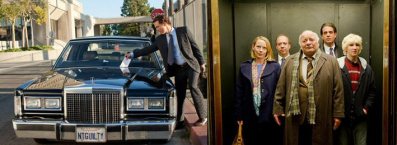
This article looks at two recent films that deal with lawyers in solo practice who skirt the boundaries of proper legal ethics. In the legal thriller The Lincoln Lawyer, Matthew McConaughey plays a criminal defense lawyer working out of his Lincoln Town Car while facing a slew of ethical issues, including attorney-client privilege, diligence, competence, and conflict of interest. In the comedy drama Win Win, Paul Giamatti plays a struggling small town solo lawyer who unethically volunteers for a guardianship appointment of an aging client under a false pretext to get the monthly guardianship fee. Though not technically a legal film, this subplot would serve as a good example in the context of teaching legal ethics.


